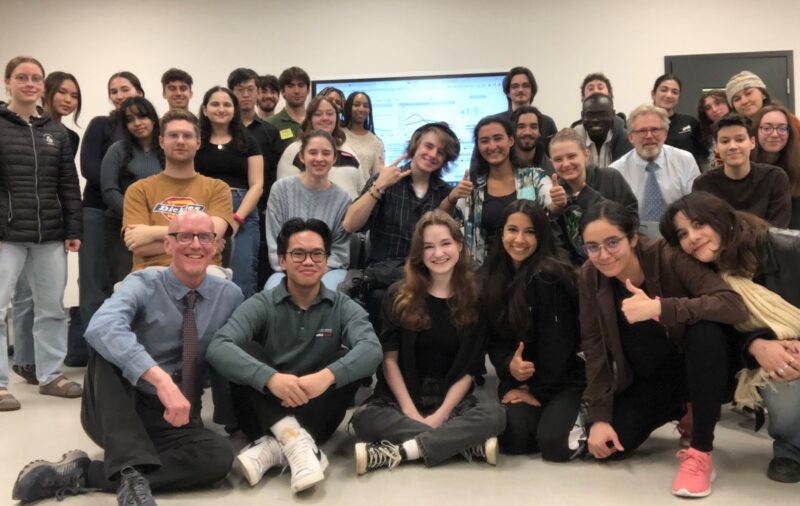Climate negotiation simulation at Dawson
Today’s students are tomorrow’s decision makers. The prospects for successfully addressing the climate challenges ahead depend on their knowledge, skills and commitment. Ian MacKenzie’s Ecological Literacy classroom hosted a two-day UN climate negotiation simulation on April 22 and 24, with the aim of introducing students to the many technical variables and competing interests in play in the UN COP climate negotiations.
The simulation was organized around a role play exercise created by Climate Interactive, an international climate advocacy group, and facilitated by Montreal environmental consultant Paul MacLean. Climate Interactive provides access to a MIT-Sloan modelling platform called En-Roads, which allows participants to see the impact of dozens of different decision inputs on projected temperature, all with an eye on the Paris Agreement goal of staying within a 1.5-2C increase from pre-industrial times.
Students step into roles as representatives of stakeholder groups such as developing and developed nations, industry and finance, renewable energy, agriculture and forestry, and, yes, the fossil fuel sector. These stakeholders develop and propose different mitigating or adaptive measures, which are then entered in the simulator in a plenary session. The cumulative impacts are assessed, and if the 1.5-2C goal is not reached, counter-proposals and trade-offs follow in subsequent rounds.
The two-day simulation helped students to appreciate the many challenges involved in efforts across multiple sectors to bend carbon emissions downward – and also experience the complexity of negotiations among stakeholders with competing interests. They liked the fact that the MIT platform had them working with real-time data; En-Roads is updated every month with new data and variables that provide an increasingly precise analysis of inputs and outcomes.
Many students were surprised at just how difficult it was to reach the “safe space” of 1.5-2C. There is not, it turns out, a silver bullet solution, but rather a multiplicity of actions oriented towards reducing emissions and increasing carbon sequestration. Finally, they enjoyed the experience of getting into role and actively working through the negotiation process, not unlike a Model UN simulation. In this case, the class becomes a COP, with some of the back and forth and noise and pressure of the real thing.
And yes, we did get down to 1.5C. It is very difficult, but not impossible – an important takeaway for students!
Interested in running a climate negotiation simulation in your classroom? Check out this Climate Interactive guide and contact Ian MacKenzie with any questions.
-Submitted by Ian MacKenzie



